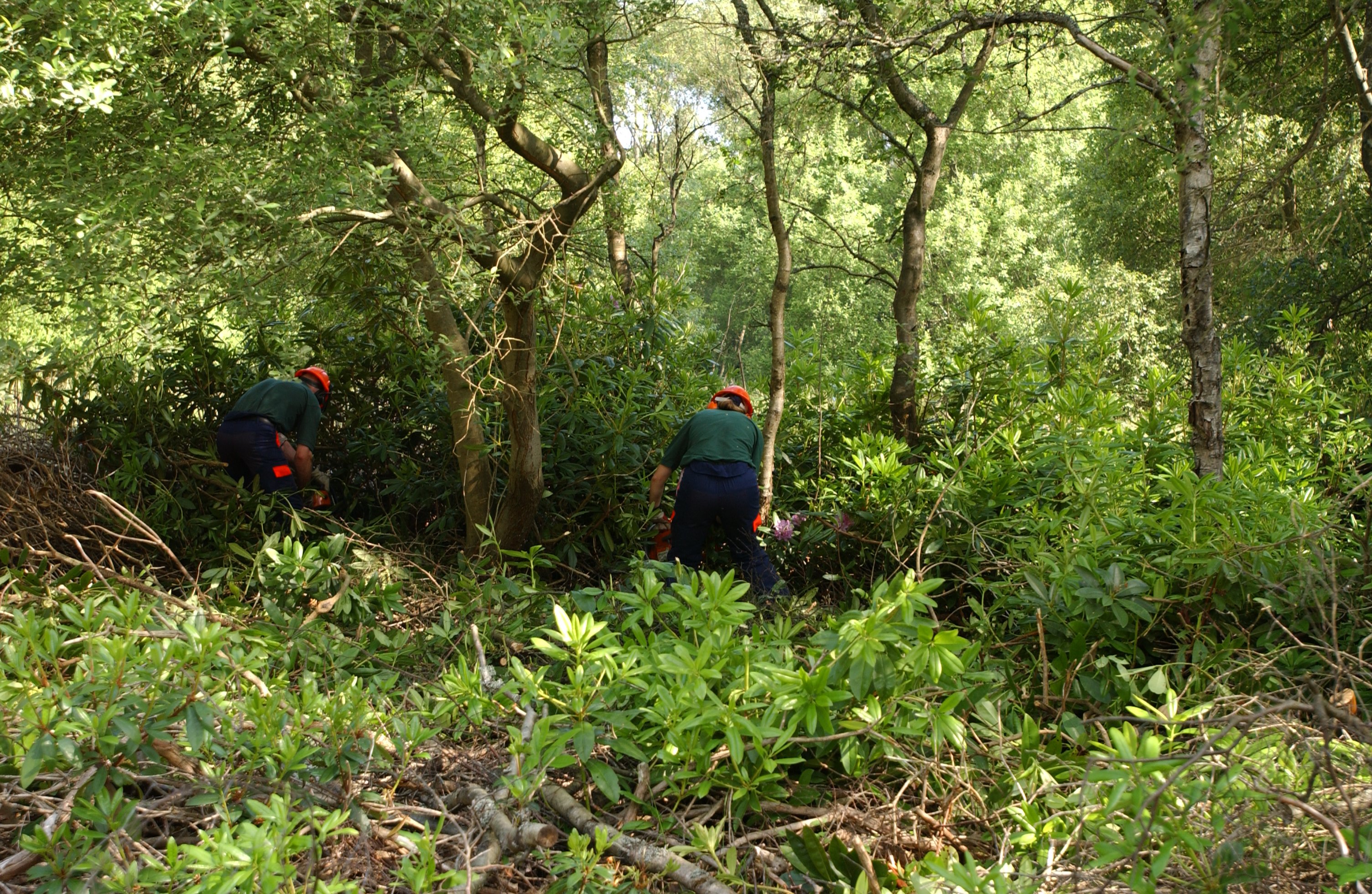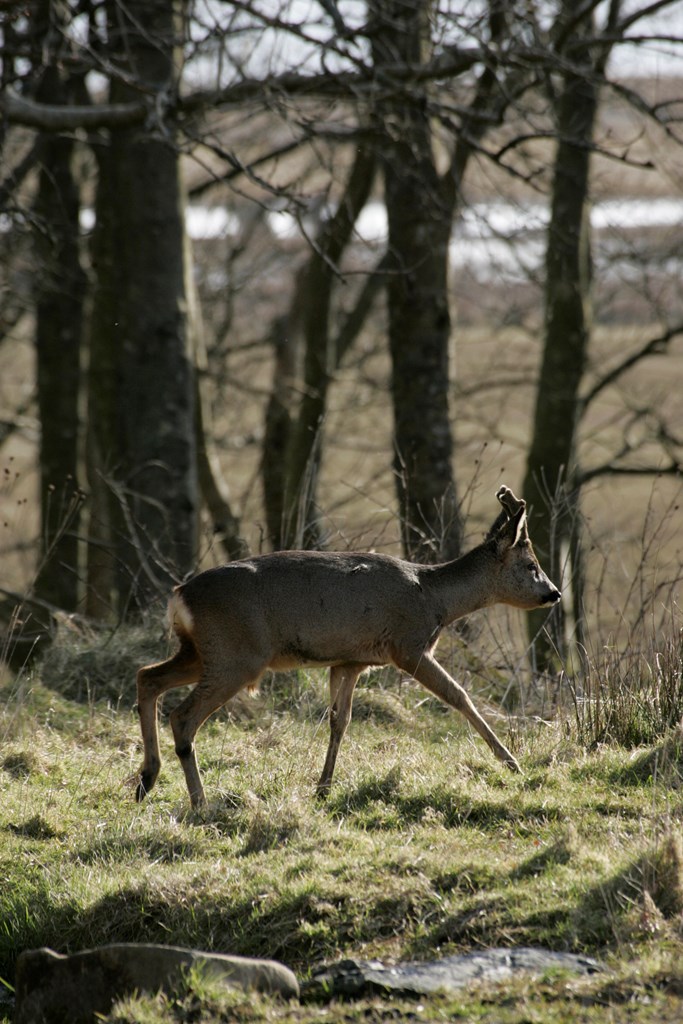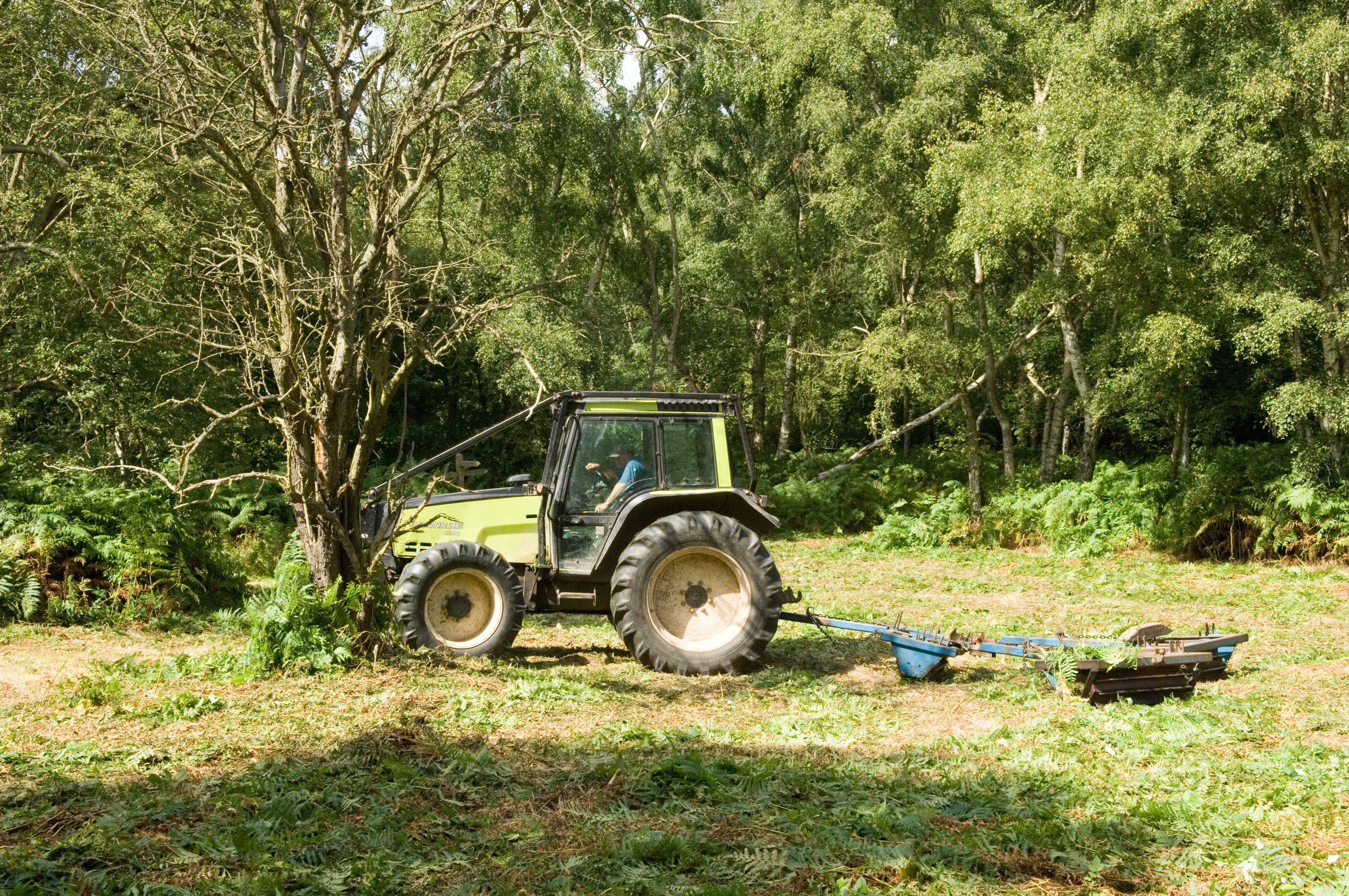Invasive Species and Disease
Invasive species are likely to have a detrimental impact on a wood. As their name suggests, they can quickly spread and outcompete more delicate native plants or cause damage through browsing.
Invasive species can be either native or non-native to the UK. Examples of native species that can sometimes become invasive in woods include bracken and holly. These species have value as part of the woodland habitat, however managing them can be important in helping to prevent their over-dominance and ensure a balance with other woodland species.
Non-native invasive species (INNS) are plants or animals that are not native to the UK. Plants such as Rhododendron ponticum, and a number of others, have encroached into woods from gardens, or been intentionally planted in woods and then spread, and have no value to native woodland wildlife. They are highly invasive, outcompeting native plants and swamping the wood. Animals such as grey squirrels cause damage to trees, inhibiting their growth, while browsing pressure from deer, including some non-native species, is increasing.
The sections below provide more information on managing invasive species, or links to further information and official guidance from Government sites. Disease is also an increasing problem for certain native tree species. It is not something that the toolkit deals with directly, but we have provided links to Government advice.
Control of invasive vegetation
| Method/Notes | Benefits for biodiversity and issues to watch out for | |
|---|---|---|
This guide by the Woodland Trust contains useful information on INNS: https://www.woodlandtrust.org.uk/publications/2013/03/wood-wise-invasive-species/ |

image: Forestry Commission
|
Removal of INNS reduces competition allowing native plants to flourish. |
Bracken management
Deer management
| Method/Notes | Benefits for biodiversity and issues to watch out for | |
|---|---|---|
Either by fencing or by lethal control as appropriate to the wood/locality
|

image: Andy Hay (rspb-images.com)
|
Deer populations have increased in many areas in recent decades suppressing replacement trees and coppice re-growth. Some species are particularly vulnerable to deer damage. However where grazing is a management requirement, deer can provide this where livestock grazing is not feasible. Where increasing deer populations are being controlled and reduced, the need to replace the positive browsing impact with restored stock grazing in abandoned pasture woodlands should be evaluated. Further information: |
Grey squirrels
Grey squirrels - This site does not include specific advice on grey squirrels, please refer to:
www.forestry.gov.uk/squirrel-damage
Diseases
Diseases - This site does not include specific advice on tree diseases, please refer to: www.gov.uk/government/collections/tree-pests-and-diseases.
You can also access information and report tree diseases at Observatree: www.observatree.org.uk.
